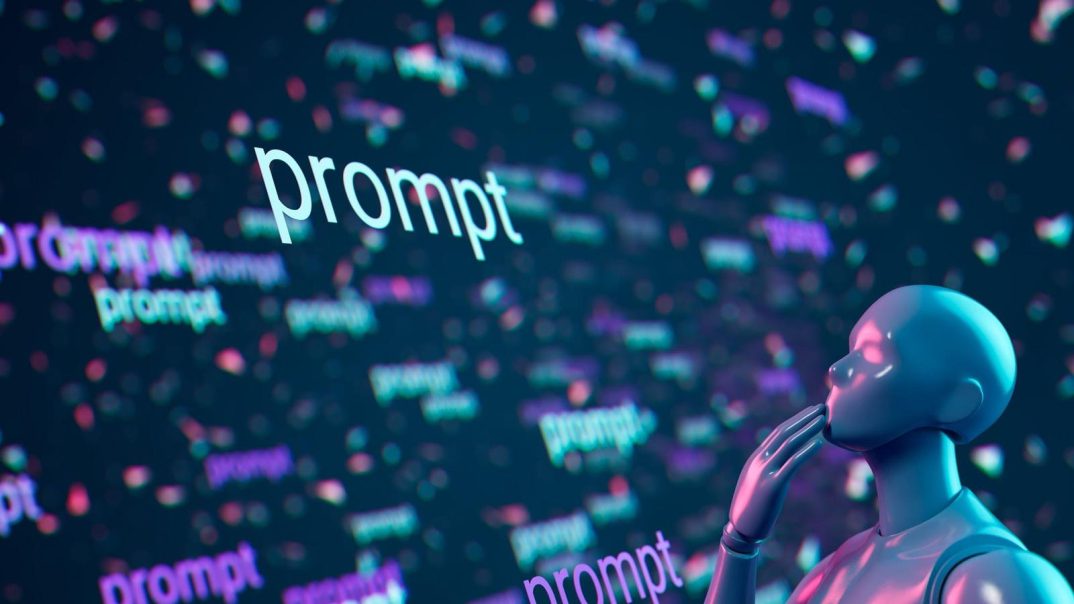Discover the five critical mistakes to avoid in generative AI prompt writing to unlock the full … [+]
Adobe Stock
Imagine having a brilliant personal assistant capable of tackling any task you throw at it – from crafting compelling marketing copy to debugging complex code. Now imagine that assistant occasionally misunderstands your requests, leading to comical – or potentially disastrous – results. Welcome to the world of generative AI, where the key to unlocking game-changing productivity lies in mastering the art of “prompt engineering.”
What Exactly is a Prompt?
In the realm of generative AI, a prompt is simply the instruction or question you provide to the AI system. It’s your way of communicating what you want the AI to do or answer. Think of it as the foundation upon which the AI builds its response. The quality of your prompt directly influences the quality and relevance of the AI’s output.
As generative AI tools like ChatGPT, Claude and Google Gemini rapidly integrate into professional workflows across industries, understanding how to craft effective prompts has become a critical skill. However, many professionals unknowingly fall into common pitfalls when interacting with these powerful systems. Let’s explore the key mistakes to avoid and how to transform your AI interactions from hit-or-miss to consistently valuable.
The Top 5 Pitfalls To Avoid When Writing Generative AI Prompts
Generative AI is a powerful tool for creating various content, from business plans to movie scripts. However, the quality of its output hinges entirely on the quality of your input – the prompt. A well-crafted prompt acts as a clear roadmap, guiding the AI to produce results that align closely with your vision. Conversely, a poorly constructed prompt can lead to wasted time, irrelevant outputs, or even problematic content.
Let’s dive into the common pitfalls that even seasoned professionals stumble into when crafting AI prompts and learn how to sidestep them.
1. The Vagueness Trap
Despite their vast knowledge, AI models can’t read minds. Without proper context, they’ll produce vague or superficial responses. Moreover, these systems are designed to generate plausible-sounding answers even when uncertain. This can lead to confidently stated inaccuracies when faced with unfamiliar queries. Always remember that clear, specific prompts are crucial for accurate and useful AI outputs.
Example:
- Poor prompt: “How can I improve my business?”
- Better prompt: “What are three specific strategies to increase customer retention for a small e-commerce business selling handmade jewelry?”
2. Information Overload
On the flip side, overwhelming AI models with excessive information can lead to confusion and incoherent responses. When dealing with complex tasks, avoid cramming multiple topics or data sources into a single prompt. Instead, break down your request into a series of focused, manageable prompts. This approach ensures clearer, more accurate results and allows you to guide the AI more effectively through intricate processes.
Example:
- Poor prompt: “Write a comprehensive business plan for a new restaurant, including market analysis, financial projections, menu development, and marketing strategies. Also, how do I hire staff, and what permits do I need?”
- Better approach: Break this into multiple, focused prompts. Start with: “Outline the key sections needed in a business plan for a new restaurant.”
3. The Context Vacuum
Vague prompts yield vague results. When given broad questions like “How can I improve my business?” AI tends to generate generic responses such as “Sell more products” or “Improve customer service.” These platitudes rarely address your specific challenges. A better approach is to craft a prompt that includes critical details and relevant information. That way, the AI can generate tailored, relevant content that closely aligns with your objectives.
Example:
- Poor prompt: “Write a product description.”
- Better prompt: “Write a 100-word product description for a luxury leather watch targeting male professionals aged 35-50. The watch features include Swiss movement, sapphire crystal, and a 5-year warranty.”
4. The Creativity Crutch
While AI excels at automating tasks and generating ideas, it’s no substitute for human creativity and insight. Don’t expect ChatGPT to pen the next bestselling novel; AI-generated creative content often falls flat, producing bland, formulaic results. Instead, leverage AI as a brainstorming partner or a starting point. Use its output as a springboard for your own creativity, infusing the final product with your unique voice and perspective. Remember: AI is a tool to enhance your creativity, not replace it. Your human touch is what will truly resonate with your audience.
Example:
- Poor approach: Asking the AI to write an entire novel or develop a revolutionary product concept from scratch.
- Better approach: Use AI to brainstorm plot points or product features, then apply your unique creative vision to develop and refine the ideas.
5. The Privacy Pitfall
Beware: public AI platforms like ChatGPT and Google Gemini are not secure vaults for sensitive information. While your inputs aren’t directly visible to others, these services may review data for compliance and improvement purposes. More alarmingly, there have been instances where private information resurfaced in AI responses to other users. The golden rule? Never input anything into a public AI system that you wouldn’t be comfortable seeing on a billboard. When dealing with sensitive data, err on the side of caution and assume zero privacy.
Example:
- Poor prompt: “Analyze this customer database (includes full names, addresses, and purchase history) and suggest marketing strategies.”
- Better prompt: Use anonymized data or hypothetical examples when working with AI on sensitive topics.
A Critical Future Skill
Mastering the art of communicating with AI in natural language is rapidly becoming an essential skill for the modern professional. By avoiding the pitfalls outlined above, you can harness AI’s power to enhance your work without needing to become a technology expert.
This democratization of technology promises a future where anyone can create custom tools and solutions for pretty much any job simply by articulating their needs to a machine.
While that’s probably a little way off yet for most of us, AI itself is very much here and now, and getting to grips with how to use (or how not to use) prompts is an important first step we can take into the AI era.





